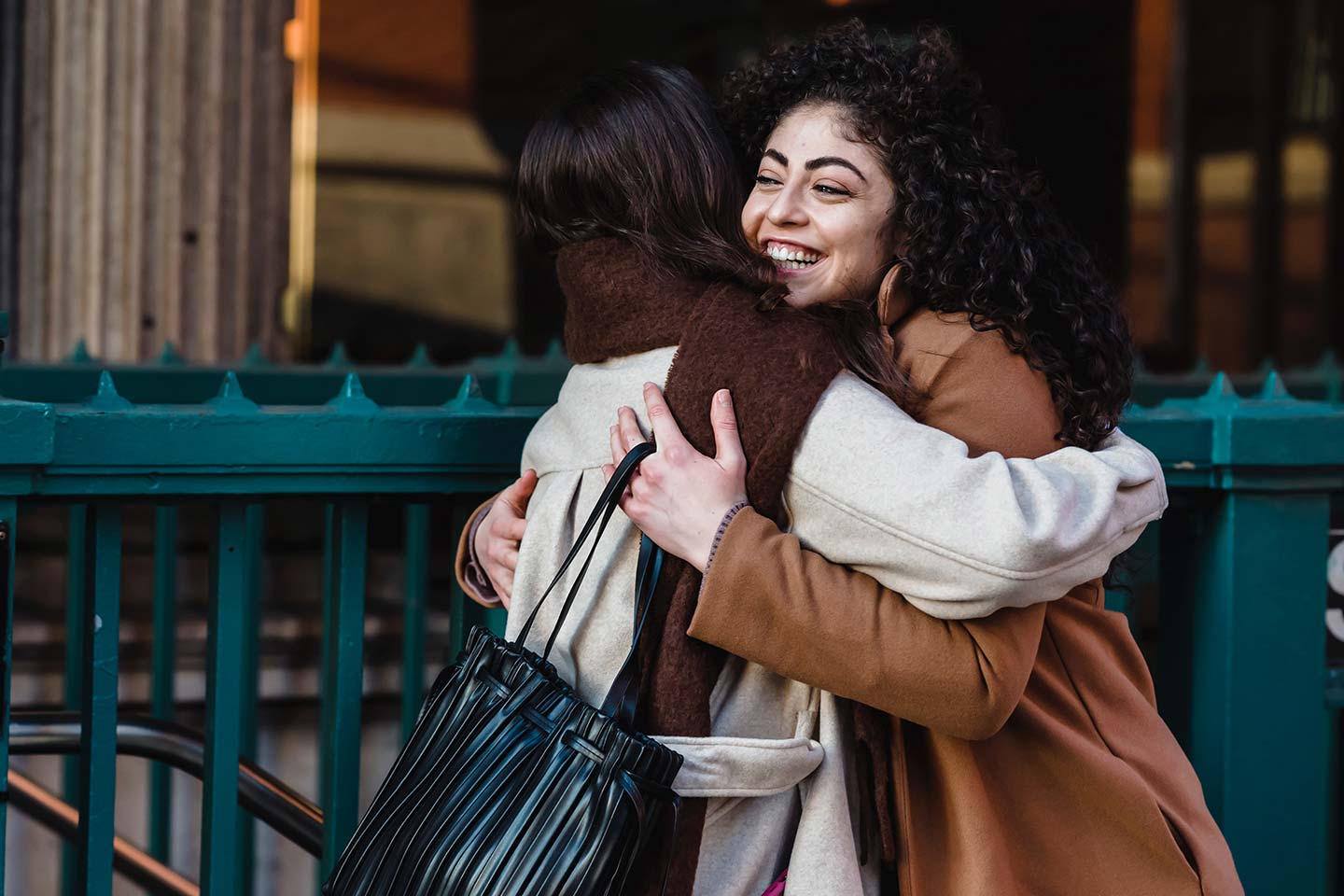How to give a COVID-mitigated hug
No activity that brings you into someone else’s breathing space is safe, but the risks associated with hugging can be lowered by taking some simple precautions.
- 26 May 2021
- 4 min read
- by Linda Geddes

Hugs have been in short supply these past 16 months. Around the world, social distancing and restrictions on local and international travel have separated friends and families – sometimes continents apart. When finally reunited, a hug is what many people crave. But is it safe to do so?
No such thing as safe
Any activity that brings you into someone else’s breathing space is risky when coronavirus is circulating. The virus is predominantly transmitted via airborne droplets produced when people talk, cough or breathe. For this reason, the WHO and most governments advise people to keep at least one metre apart from one another, and to wear a mask.
The US Centers for Disease Control (CDC) recently advised that it would be safe for two fully vaccinated people to hug, so long as they waited until at least two weeks after their final vaccine dose.
Hugging should be avoided if you have any symptoms – even non-specific ones like a headache, diarrhoea, or a sore throat. If you’ve tested positive for SARS-CoV-2, or have the common COVID-19 symptoms of fever, a dry cough, fatigue or loss of smell/taste, it is even more important that you keep your distance from other people, and (if possible) get a COVID-19 test.
Have you read?
Also, worth considering is the number of infections in your local area. If these are high – or if COVID-19 tests aren’t readily available and you don’t know what the rate of infection is – it is better to err on the side of caution, and avoid physical contact with people who aren’t in your household.
Brief encounters
Proximity isn’t the only factor. The more time you spend in close contact with another person, the greater your chances of inhaling enough virus to trigger an infection. If you do decide to do it anyway, those risks could be further reduced by keeping the hug brief, or even holding your breath and not exhaling until you’ve stepped apart. Wearing a face covering, turning your heads in opposite directions, ensuring that both people’s hands are clean, and not touching the other person’s face or clothing with your face, are other sensible precautions.
The tall and short of it
If there’s a big height difference between the two of you, hugging from behind might make sense. This could also be a good strategy for grandparents wishing to hug their grandchildren, because their faces are kept well apart. The same is true of a child hugging an adults’ legs – although none of these positions is entirely safe, because their faces would still be within a metre of each another. Unvaccinated grandparents, or anyone else who is clinically vulnerable to COVID-19 should be particularly cautious about hugging.
Protected hugs
What about after you’ve been fully vaccinated? The US Centers for Disease Control (CDC) recently advised that it would be safe for two fully vaccinated people to hug, so long as they waited until at least two weeks after their final vaccine dose. However, the vaccine is not 100% effective, so they can still potentially become infected, develop symptoms and transmit the virus to other people – even though their risk of developing serious illness is greatly reduced. This means vaccinated people should be more cautious about hugging unvaccinated, or only partially vaccinated individuals. Even if they are at low risk of severe disease, the more the virus gets transferred to other people, the more likely we are to see the emergence and spread of new variants which could render the vaccines less effective, and for those variants to further mutate. There will come a time when we can all safely hug again, but not until a large proportion of the world has been vaccinated.








